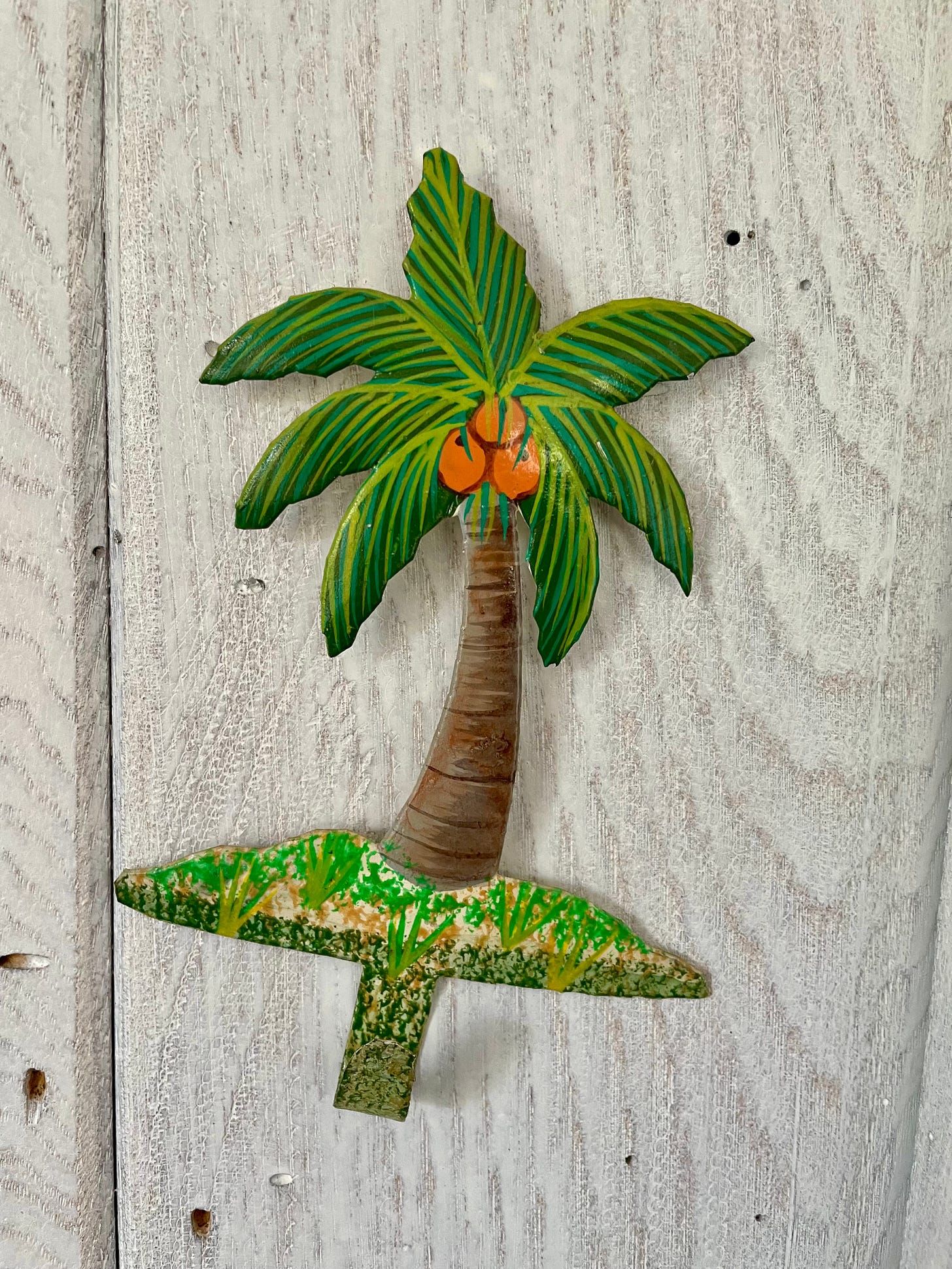Hello Superstars!
I thought I knew something about the history of steelpans—I was wrong. My confusion stemmed from a popular art form available in Christiansted shops when I was growing up—Haitian steel drum art. These metal pieces are typically cut and painted to look like local flora and fauna, marine life, and tap-tap buses.
Since these creations are fashioned from old oil drums—just like steelpans—I realize that at some point as a kid I mixed up ‘steelpans’ with ‘steel drums’ and made up a story for myself that the drum art was made out of worn-out steelpans on Haiti. But steelpans were born across all of the Antilles, on Trinidad & Tobago. That just goes to show how easy it is to misunderstand things.
The beauty of Caribbean music is informed by the ugliness of its history. Take calypso, for example. Listen to this recording of “The Gold in Africa” by Old Brigade member, Growling Tiger, performed in 1973—nearly 40 years after its original recording on Trinidad.
It kind of reminds me of something my Nana would have listened to on whatever AM radio station she located her Big Band music in the 70s and 80s. Calypso sounds fun to dance to but listen to the lyrics: “The Gold in Africa” is all about how Mussolini invaded Africa to plunder its riches and kill Haile Selassie. Growling Tiger wanted people to know that it wasn’t right.
That is the theme of reggae, rockers, and ska music, in my opinion: pair heavy social commentary with upbeat music to create what was once called ‘the poor [person’s] newspaper.’ The tattoo of calypso rhythm was the vehicle for this form of subversion against the tyranny of colonial rule.
What does this have to do with steelpans? They’re often associated with calypso and emerged from that art form (although nothing beats a full steel band on a float during Parade, with a dozen or more pannists ping-panging out a perfect symphony).
A pannist is a person who plays the steelpan.
Did you know that drums were banned in Trinidad in the late 1800s when the oppressors figured out that their rhythms carried secret messages? Musicians replaced their criminalized drums with bamboo sticks, kitchen utensils, and scrap metal to achieve percussive sounds. Eventually, someone thought to use an old oil drum to produce a tinny, exuberant music.

What set oil drums apart from the other objects being used to make music? It was all about the notes. The expanse of metal across the top of a drum accumulated dents as it was hit with sticks. Musicians discerned that various notes could be achieved by hitting dents, the raised areas meeting the lip of the oil drum, and the flat of the center.
August 11 is World Steelpan Day.
Steelpans are now required learning at my old school. Sure, I’m jealous—my class didn’t have that opportunity—but thrilled that the art form is being honored.
Here is an example of a modern pannist. So beautiful.
Fun fact from Wikipedia: “In 1941, the U.S. Navy established a presence in Trinidad. The pannists, who were associated with lawlessness and violence, helped to popularise steelpan music among the soldiers, which began its international popularisation.” Now, that’s smart thinking!
May your week be filled with cool breezes and gorgeous music.
Talk soon! 💛














Share this post